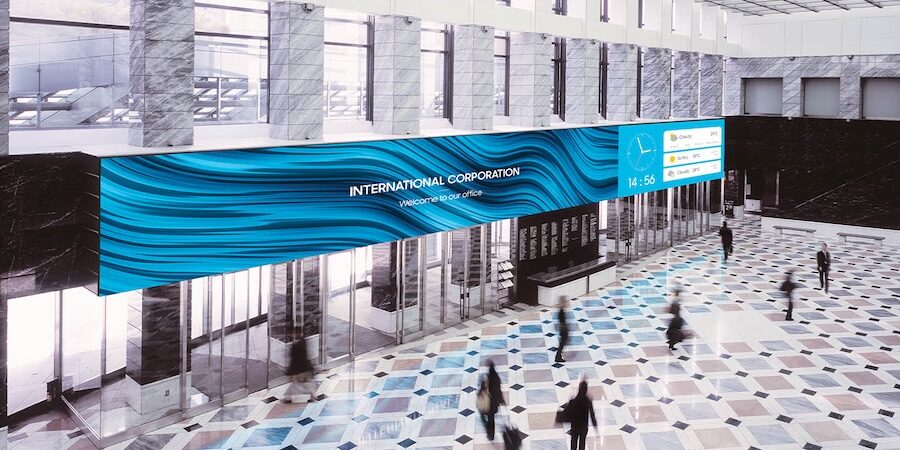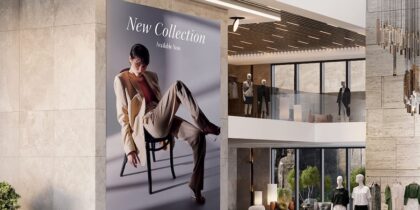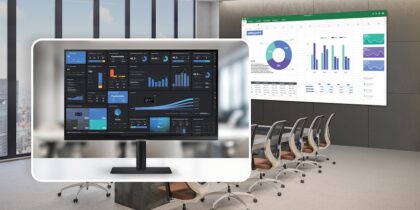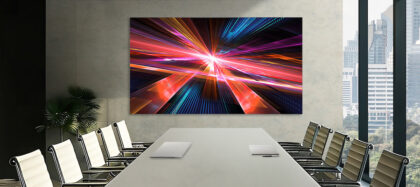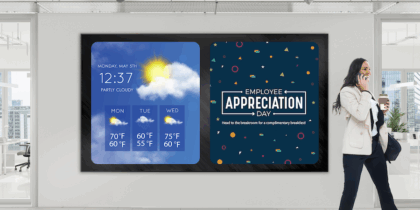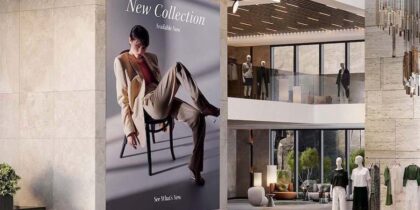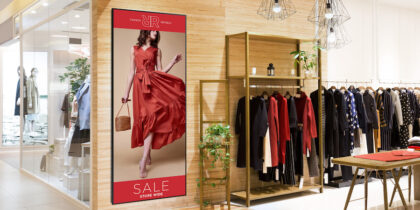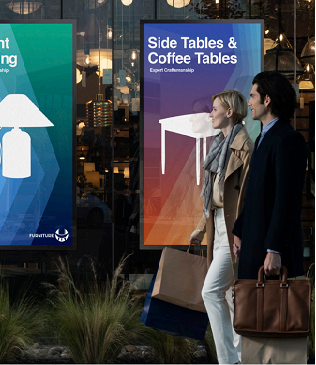LED video walls represent a major investment for businesses. When implemented well, they can generate a multifold return across the board, from fostering collaboration and interactivity to boosting employee morale and office culture. That makes finding the right supplier, partner and system imperative.
Here are five key considerations that can help you make the smartest decisions about your LED video wall supplier.
1. Pixel pitch and viewing distance
Pixel pitch — the distance between an LED cluster and the next — can make a lot of difference in the viewing experience. In simple terms, the lower the pixel pitch, the finer the resolution. The rule of thumb is that 1mm of pitch equals 8 feet of comfortable viewing distance. So, a 1-millimeter pixel pitch display looks good even if you’re as close as 8 feet away, whereas a 2.5-millimeter LED display is best viewed from 20 feet away or more.
If your audience’s vantage point for your LED video wall is more than 20-feet away, you can opt for a larger pixel pitch. But if your LED video wall is installed in an executive boardroom or on the floor of your retail store, a video wall like the newest Samsung MPF The Wall Premium Indoor LED Display is more ideal. Two out of its three models — the MP008F and MP012F — fall into this category with a 0.84mm and 1.26mm pixel pitch, respectively. A video wall like The Wall MMF-A (All-In-One) Large LED Display, which has a 1.56mm pixel pitch, is another good option.
2. Desired resolution and clarity
No LED project should get underway until you know what you’re going to use it for and the types of content you’ll be displaying. When you know, it’s easier to understand the resolution parameters you’ll need. Display technology has evolved a lot in the past decade. Now, 4K has become standard, while 8K is stepping up as the next-generation viewing experience.
Pixel pitch and resolution — the number of pixels in the display area — tend to go hand in hand. If your audience is looking at the LED display from a distance, you may opt for a 2K, also known as Full HD. If you want to deliver a jaw-dropping viewing experience from any angle, 8K may be a better option.
There are other factors that can affect how images appear on your LED video wall. MicroLED, the leading LED technology on the market, uses light-emitting pixels to create clear, crisp visuals, regardless of the resolution. Advanced picture features, such as the AI processor and the 120Hz refresh rate in MPF the Wall, help deliver true-to-life colors that pop. All three models of the MPF The Wall are HDR-compatible and support LED HDR, HDR10, HDR10+ support and AI Picture.
Another important feature is color mapping, which translates the digital signal into the colors you see on a screen. Bit depth is key here. The more bit depth, the more levels of intensity each of the three colors channels — red, green and blue — you can see.
Signage and screens that have 20-bit processing like MPF The Wall and the The Wall MMF-A can provide more than a billion colors and shades. Its deeper bit depth at low grayscale levels in particular delivers extraordinary contrast ratio and smooth, natural tones. Two other features including Black Seal Technology+ developed by Samsung and authentic colors validated by Pantone improves picture quality significantly, giving you on precise expression of 2,140 Pantone colors and 130-plus skin tone shades.
3. Quality of hardware and support
There are hundreds, if not thousands, of LED video wall suppliers, display manufacturers and resellers globally. A small fraction are well-established global consumer and professional electronics brands, and another percentage includes well-established specialty display companies that have long put a focus on LED. Many others are small companies that focus on low cost above all else.
In choosing an LED supplier, buying on price alone is seductive, but risky. Here’s why: The lower price inevitably means corners have been cut to keep costs down in the manufacturing process, and that’s reflected in the quality of components. The concept of “binning” — a quality measure that classifies tiny LED lights by their light output, voltage and color properties — applies here. Top manufacturers use lights from narrowly defined bins so there’s uniformity across the display modules. Low-cost manufacturers select from much broader bins with lower-quality LEDs, resulting in substandard displays that look bad from the start.
Customer service can be another problem with low quality displays. Not only could it be 12 time zones away and employ representatives who struggle with English, the call center may not even be staffed by technical experts who can provide the necessary help.
4. Serviceability
In most commercial installations, space is at a premium because of the cost per square foot. Setting up a LED video wall that requires access from the rear to get at the electronics and connectors means it has to be bumped out a foot or two from a structural wall so technicians can do the initial installation and servicing. That space is no longer usable for anything else. Weight is also an issue and may require additional supports and construction to get things done safely.
By comparison, front-serviceable displays by Samsung allow easy access. Other instillations use individual LED modules, which can be removed with a magnetic tool in a matter of seconds, with no disruption. Front-serviced displays also minimize the necessary footprint of a direct view wall, with just enough clearance required in the rear to allow airflow for cooling.
How to plan and deploy direct view LED signage
Everything you need to know about choosing your LED displays for optimal viewing indoors and out. Download Now
MPF The Wall takes all of this out of the equation with its unified, slim and light frame. In addition, a magnetic design ensures quick installation and module-by-module maintenance, making service easier and less taxing on everyone involved.
5. Regulatory compliance
Another way offshore companies keep costs down is by ignoring certification processes for electronics, most notably the U.S. Federal Communications Commission (FCC) regulations that require electronic equipment, such as LED displays, to be tested to ensure they’re not radiating interference that exceeds specified levels.
That interference can affect everything from cellphone networks to mission-critical operations like airport control tower communications.Well-established, top-shelf manufacturers like Samsung, by comparison, have the necessary certifications fully in place. Plus, many have systems in place to help with any permitting required to install the display.
Learn more about the latest MPF The Wall Premium Indoor LED Display and how you can use it in your business.
